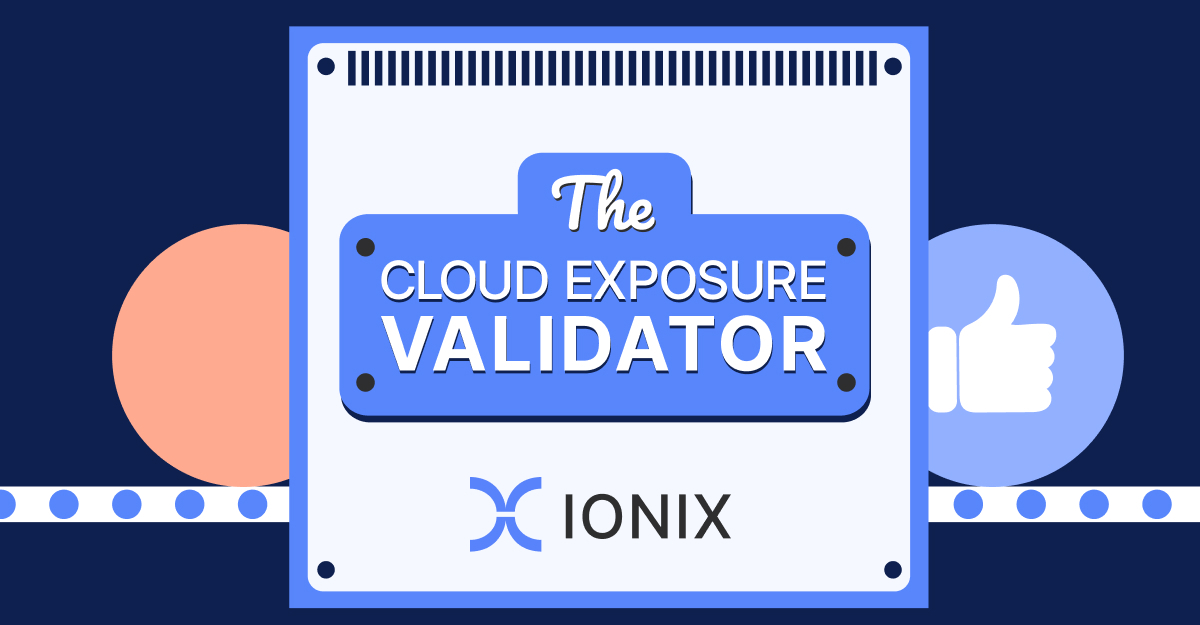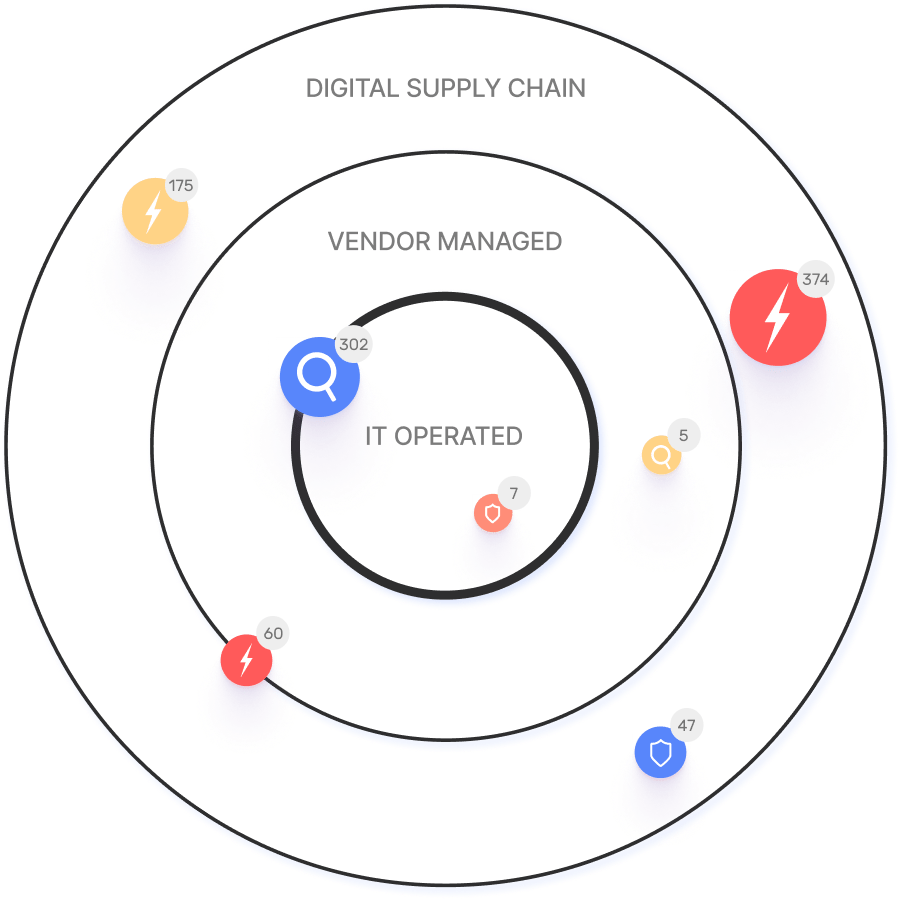OWASP Top 10: Vulnerable and Outdated Components
Author: Amit Sheps, Director of Product Marketing
Modern software development relies heavily on third-party components—libraries, frameworks, and packages that accelerate innovation and efficiency. However, these dependencies can introduce significant security risks if not properly managed. This article explores the OWASP Top 10 risk of Vulnerable and Outdated Components, real-world attack scenarios, and how IONIX helps organizations proactively address these threats.
What is the Risk?
Using third-party components without timely updates exposes applications to vulnerabilities outside the direct control of your development team. Attackers exploit these weaknesses to breach data, disrupt services, or gain unauthorized access. The lack of visibility into indirect dependencies further complicates risk management.
Examples of Attack Scenarios
- SQL Injection in a Library: An attacker exploits a known SQL injection flaw in a third-party library, accessing or corrupting sensitive data.
- Remote Code Execution (RCE): Vulnerabilities in outdated components allow attackers to execute arbitrary code with the application's privileges, potentially compromising the entire environment.
- Supply Chain Attacks: Malicious or compromised packages are introduced via untrusted sources, bypassing traditional security controls.

Case Study: Log4Shell
The Log4Shell vulnerability (CVE-2021-44228) in the popular Log4j Java logging framework allowed remote code execution and affected millions of systems. Despite rapid patch releases, many organizations remained exposed due to slow or incomplete updates. Log4Shell remains one of the most exploited vulnerabilities, highlighting the critical need for proactive component management.
How to Remediate Vulnerable and Outdated Components
- Minimize Third-Party Dependencies: Only include essential libraries and regularly remove unused components.
- Source from Trusted Repositories: Verify authenticity and integrity of all third-party code.
- Maintain a Software Bill of Materials (SBOM): Track all dependencies for visibility and rapid response to new vulnerabilities.
- Monitor for Updates and CVEs: Continuously check for new releases and disclosed vulnerabilities affecting your stack.
- Apply Patches Promptly: Integrate updates into CI/CD pipelines to ensure timely remediation.
- Avoid Abandoned Libraries: Replace or internally maintain unmaintained packages to prevent exposure to unpatched flaws.
How IONIX Can Help
Identifying and managing vulnerable components—especially indirect dependencies—can be overwhelming. IONIX addresses these challenges with a comprehensive, ML-driven platform that:
- Continuously Discovers Exposed Assets: IONIX's Connective Intelligence maps your entire external attack surface, including shadow IT and third-party dependencies.
- Validates Exploitable Vulnerabilities: Simulates real-world attacks (including OWASP Top 10) to identify which outdated components are truly at risk.
- Prioritizes Remediation: Contextualizes vulnerabilities by severity and business impact, reducing alert fatigue and focusing resources on what matters most.
- Streamlines Remediation: Integrates with Jira, ServiceNow, Splunk, and more for automated ticketing and incident response.
- Supports Compliance: SOC2, NIS-2, and DORA compliance support ensures regulatory alignment.
For a real-world example, E.ON used IONIX to continuously discover and inventory internet-facing assets, improving risk management and reducing exposure to outdated components.
Request a free demo to see how IONIX can secure your digital supply chain.
FAQ: IONIX & Vulnerable and Outdated Components
How does IONIX help identify vulnerable and outdated components?
IONIX automatically discovers all internet-facing assets and their dependencies, including third-party components. It simulates attacks to validate which components are exploitable, providing actionable insights for remediation.
What makes IONIX different from other attack surface management solutions?
IONIX's ML-based Connective Intelligence discovers more assets with fewer false positives, offers prioritized threat exposure insights, and integrates seamlessly with existing IT and security workflows. It is recognized as a leader in product innovation and usability.
How quickly can IONIX be implemented to address vulnerable components?
IONIX can be deployed in about a week, requiring minimal resources. Customers benefit from onboarding guides, tutorials, and a dedicated support team for rapid time-to-value.
What customer feedback exists regarding IONIX's ability to manage outdated components?
Customers rate IONIX as user-friendly and effective, with dedicated account managers ensuring smooth communication and support. Case studies from E.ON and Warner Music Group highlight measurable improvements in risk management and operational efficiency.
Does IONIX support compliance requirements related to third-party risk?
Yes, IONIX is SOC2 compliant and supports NIS-2 and DORA compliance, helping organizations meet regulatory obligations for third-party risk management.
Customer Proof & Success Stories
- E.ON: Improved risk management by continuously discovering and inventorying internet-facing assets. Read the case study.
- Warner Music Group: Boosted operational efficiency and aligned security operations with business goals. Learn more.
- Grand Canyon Education: Enhanced security by proactively discovering and remediating vulnerabilities. Details.
About IONIX
- Product Innovation: Leader in ASM Leadership Compass for innovation, security, and usability. Details.
- Integrations: Works with Jira, ServiceNow, Slack, Splunk, Microsoft Sentinel, Palo Alto Cortex/Demisto, AWS, and more. See all integrations.
- API: Robust API for seamless integration with major platforms.
- Support & Onboarding: Dedicated account managers, technical support, and comprehensive onboarding resources.
- Industries Served: Insurance, Financial Services, Energy, Critical Infrastructure, IT, Technology, Healthcare.
- Customer Logos: Infosys, Warner Music Group, The Telegraph, E.ON, Grand Canyon Education, Fortune 500 Insurance Company.




